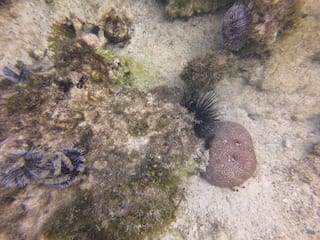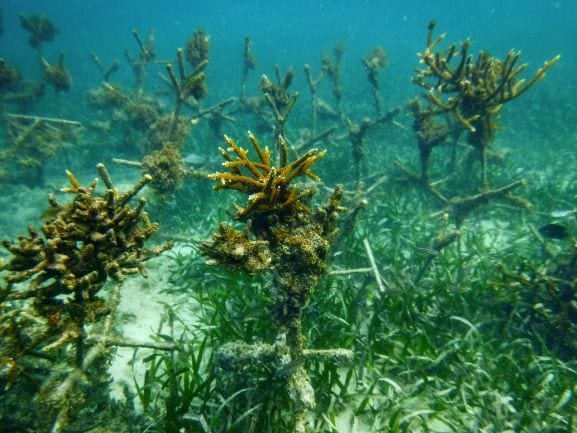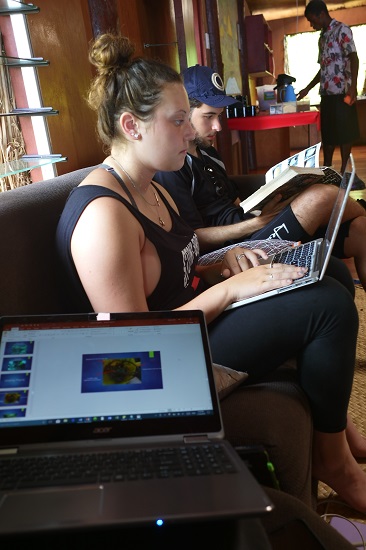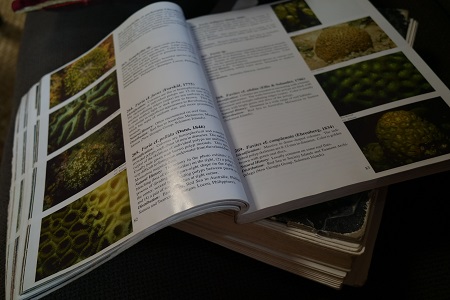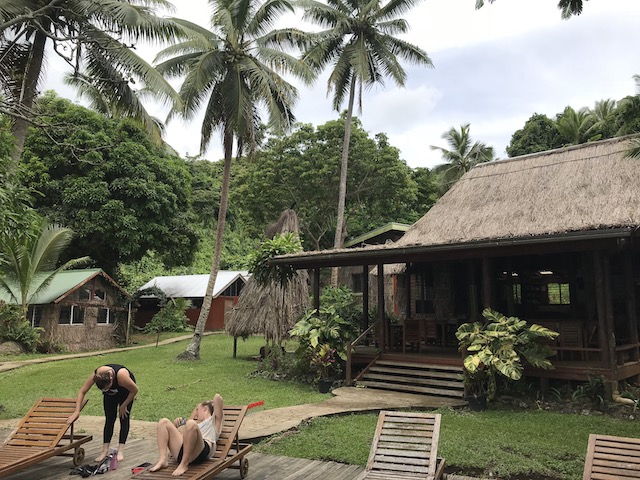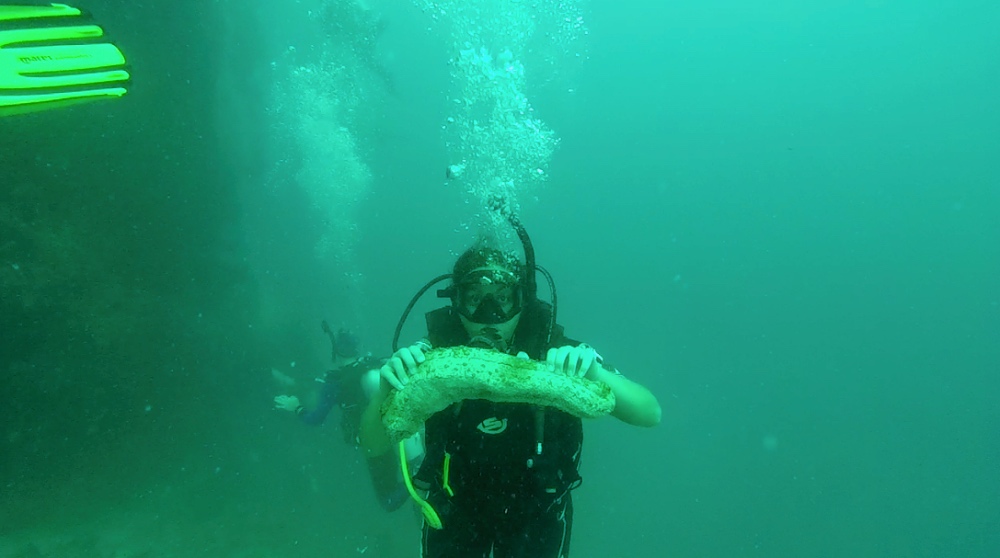This morning, we all woke up early around 7am to the sound of turkey vultures running around on the roof— which doesn’t sound fun but, it helped us all be on time for breakfast! After breakfast we got our snorkel gear out, suited up and went out in small groups to discover the bay, at Discovery Bay. Many of us got into the water not expecting to see things other than sea grass or coral, and in just minutes we found all sorts of creatures.
Around 5 minutes into our trip Kaitlin, a graduate student on the trip, told us to put out our hands and she put two spectacular organisms in our hands— one of which, you can recall from Finding Nemo, sticking to the surface of the tank, and another some may know from Freddie The Fish (a CD-Rom game from the 90’s). Well, if these clues didn’t help, take a look at these pictures we captured.
That’s right, we saw Starfish and Sea Urchins. The first picture is of Lucas holding a Starfish (also known as a Cushion Sea Star, scientific name Oreaster reticulatus from the class “Asteroidea” which live in shallow sea grass beds and sand flats), while the second picture is two different species of urchins. The spiked urchin toward the middle of the picture we didn’t touch, while the blob looking, white spiked urchins we held onto for a little. While I held onto this, I felt the tiny little spikes suck into my skin a little almost like velcro. These are called West Indian Sea Egg, scientific name Tripneustes ventricosus. We also saw anemones, sea cucumbers, some students saw a barracuda (yesterday), and all sorts of corals, fish and plants.
We’re all excited to see what the next day brings, as most of us are going to be headed to finish part of our SCUBA certification in the days ahead and go out past the reef barrier.
-Cookie Kelly



